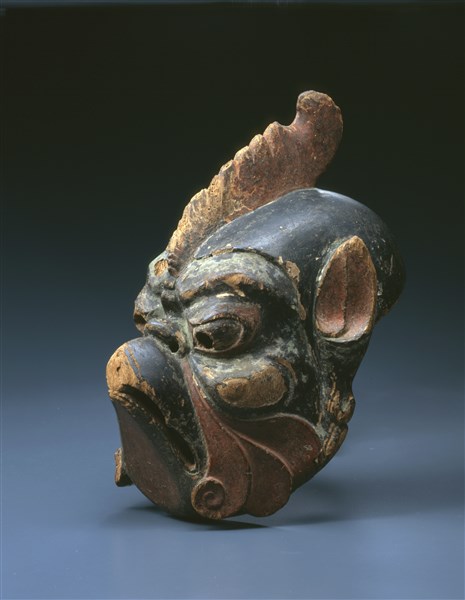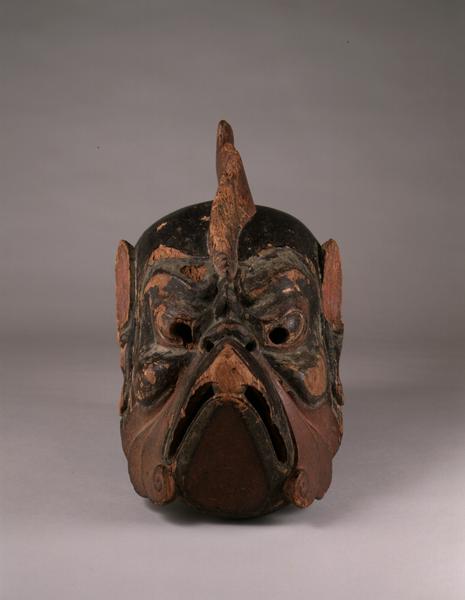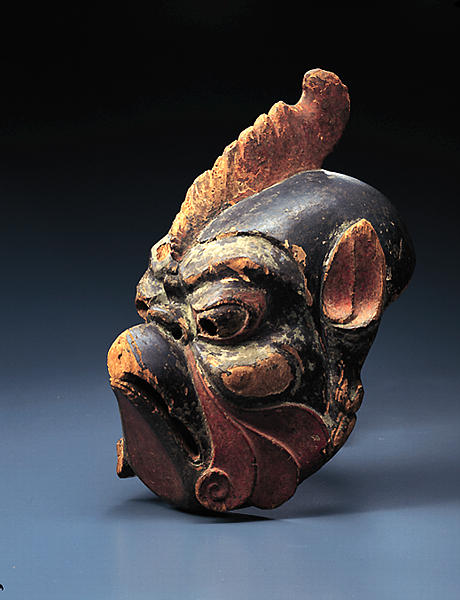Gigaku Mask Karura (Garuda)
- Nara period
- 8c
- Wood (paulownia) with polychrome
- H-39.1
- Tranmitted by Todaiji temple, formerly in the collection of Hara Sankei (Tomitaro)
Catalogue Entry
Nara period, 8th century
Wood with polychrome
Height, 39.1cm; width, 21.2cm
Gigaku dance is thought to have originated in the Kingdom of Wu (A.D. 222-280) during China's Southern Dynasties and was brought to Japan during the Asuka period. The name Kuregaku is also recorded for this Gigaku theatrical form. There are not many roles in this theatrical form--in addition to Karura, there are lion, the Lord of Wu, and Konron--but this theatrical form was only performed until the Nara period and is not performed today. The remaining artifacts of this dance form have mainly been handed down at Horyuji, Todaiji, and the Shosoin. The majority of the Asuka period works are carved from kusu or camphor wood, and with the Nara period, it also became the fashion to create these masks from kiri (paulownia) or dry lacquer. The masks of this period and later were characterized by their particularly large scale.
Karura is a deified bird. In Indian mythology, the Karura was a sacred bird that ate the poisonous snake. When this deity was taken into Buddhism, it became one of the gods who guard the Buddhist faith. This mask is in the form of the Karura bird, and a jewel is grasped in its open beak, a topknot is on its head, and layers of flesh are hanging beneath its neck. This mask is carved from pawlownia, a wood that ably conveys the soft feel of the flesh and gives the work the air of this king of birds. The method of construction indicates that it was produced during the Nara period. This is an ancient form, with a similar example at Todaiji thought to have been used at the dedication ceremony of Todaiji's Daibutsu Hall. SI


